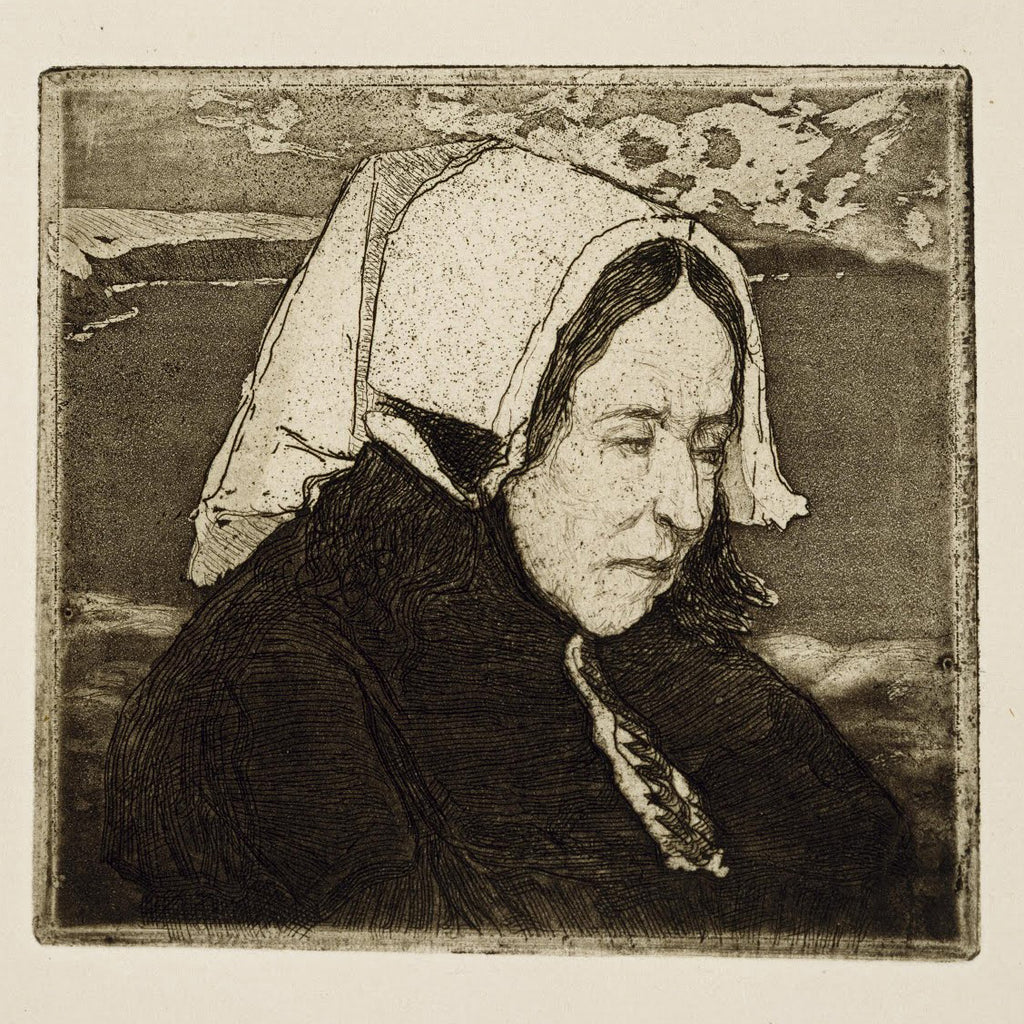
Pont En Royans
COTTET, Charles
Etching and aquatint on simili-japon paper. Reference: Morane 67.No edition. Scarce.
Charles COTTET (1863–1925) was from the South of France, from the Savoy. He received his training and found his artistic community in Paris, like many of his peers at the time. However, Cottet found his true inspiration in Brittany, which he started to visit in the mid-1880s. Views of the wild coastline of Brittany, the devout Christian life of the locals and the trades and traditions of the fishermen and women that inhabited the remote part of France, were his muses. He left behind a vast painted oeuvre, and a not insignificant number of etchings, mostly in color. His painting often shows symbolist undertones. His prints do not. A few of them are even rather realistic, and include some portraits of courtesans.
Influenced early on by his friendship with Nabis artists, such as Maurice Denis and Edouard Vuillard, the first prints Cottet made were lithographs, both black and white and in color. He did not practice the technique long. By 1905, when he discovered etching, he turned his attention fully to intaglio, generally structuring his compositions with pure-line etching, which he often shaded with aquatint. While he composed monochromatically, he often printed at least part, and sometimes all of this editions in color, using the “rag doll” method (à la poupée). Approximately 59 prints came out of his hands.

Etching and aquatint on simili-japon paper. Reference: Morane 67.No edition. Scarce.
 Sold
Sold
Vieille Femme d'Oeussant (original French title) Etching and aquatint on laid paper.Reference: BN-IFF 2 (page 211).Printed by "A.Vernant et E. Doll...
View full details Sold
Sold
Le Retour des Pêcheurs or Pêcheurs Fuyant l'Orage (original French titles) Printed in color on laid Arches paper. Reference : BN-IFF 2-4, Morane 18...
View full detailsPlease sign up for our newsletter
Email: info@armstrongfineart.com
Phone: 773-887-6776
1200 West 35th Street, #186
Chicago, IL 60609
Copyright © 2025 Armstrong Fine Art.
Development by Alo Agency. Powered by Shopify
